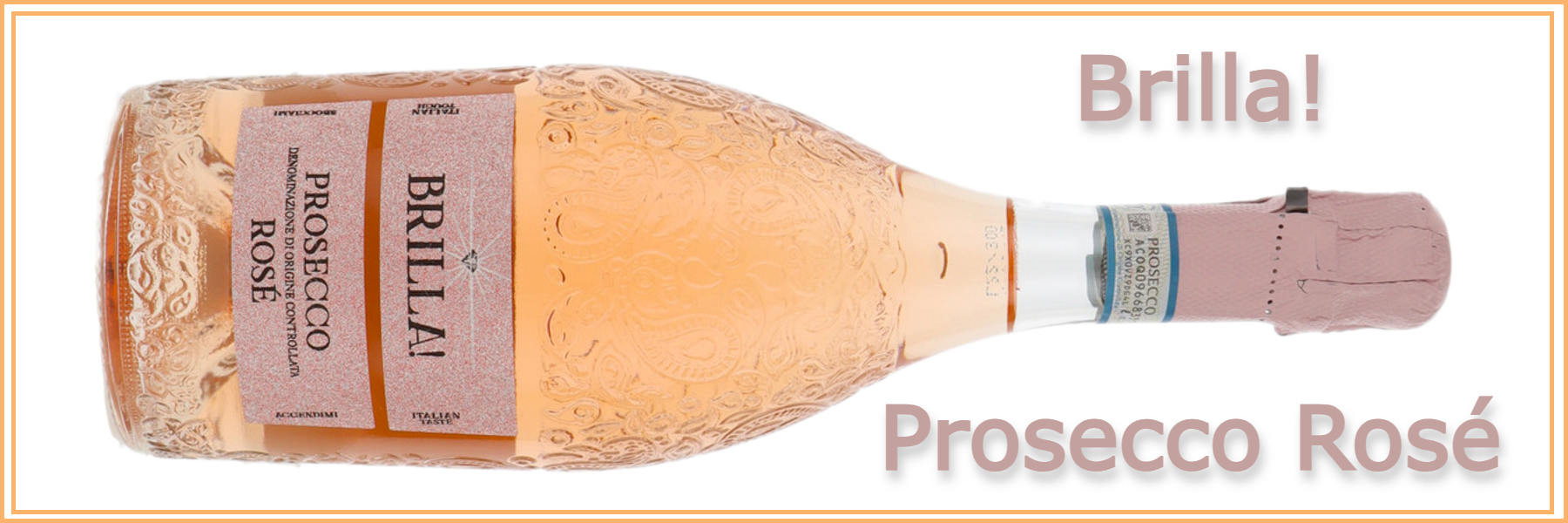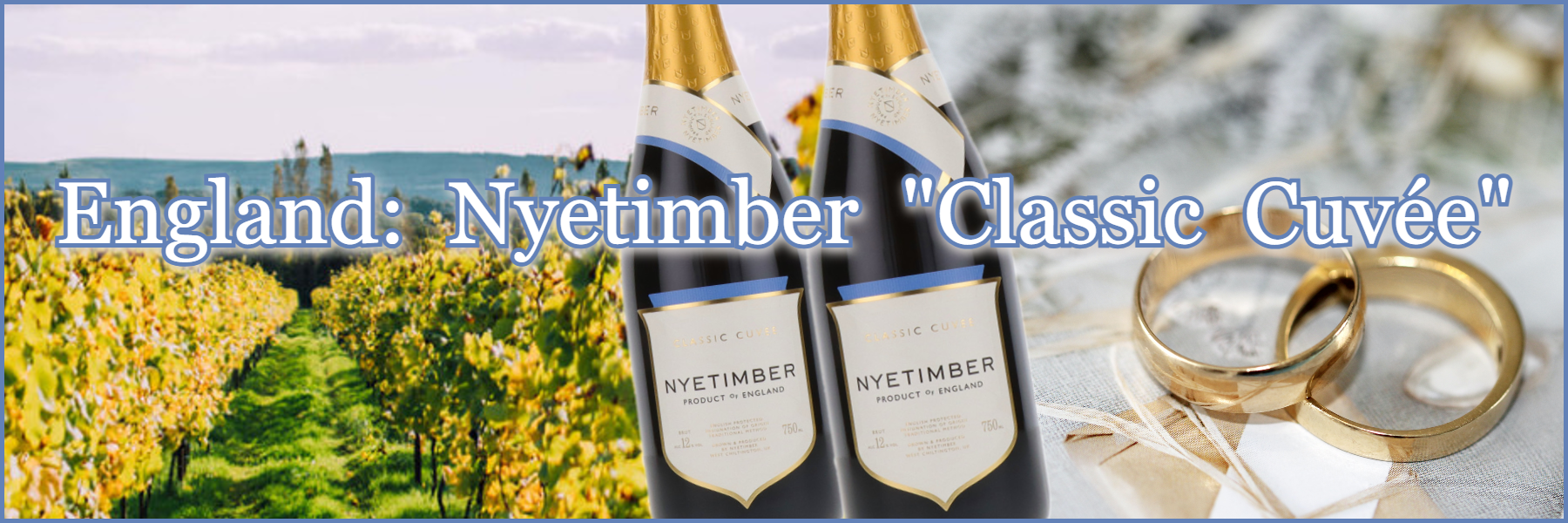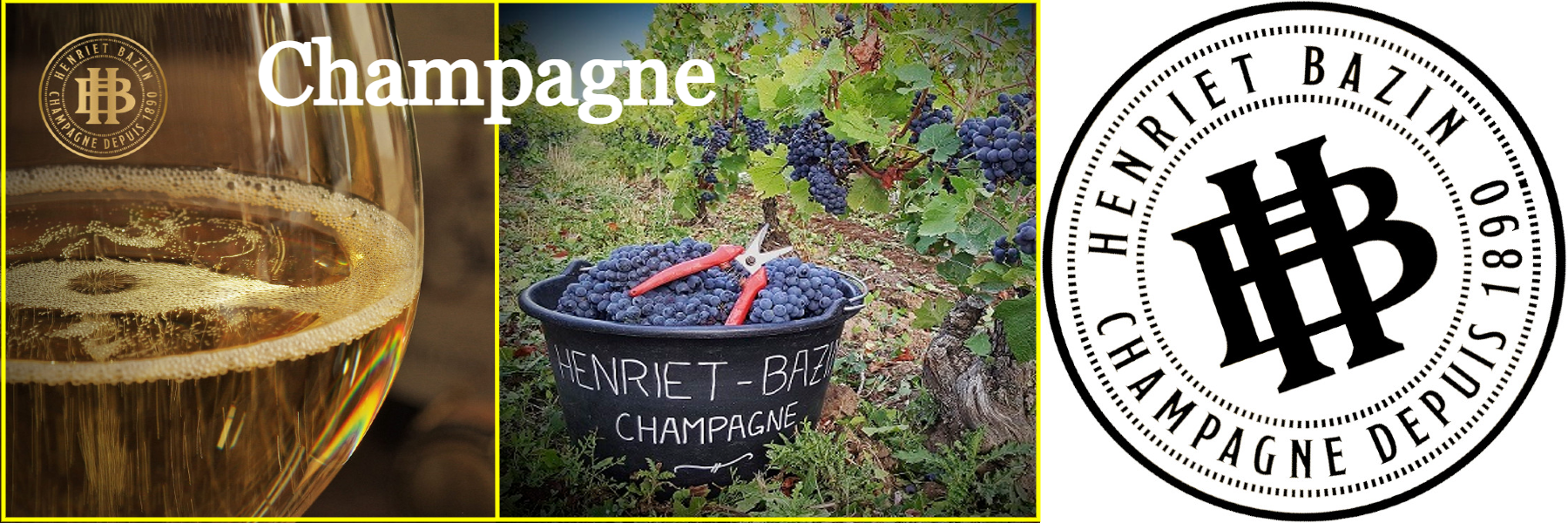The three Witches: "Double, double toil and trouble; Fire burn and cauldron bubble"
Well, maybe that's how Shakespeare thought sparkling wine would be made in the future as, when Macbeth was first published, Champagne's famous luminary, Dom Perignon, had only just been born and was decades away from transforming many of the winemaking techniques in use in 17th century France. Most people at the time consumed "fermented beverages" as they were much safer than the local water supply which was highly polluted with all sorts of nasties... "Eye of newt and toe of frog"... you get the picture!
Sparkling wines were originally the creation of the alchemists of yore and, in particular, Dr Christopher Merret was the first to have been credited with the understanding of how to add sugar to wine to allow a second fermentation in the bottle which produced carbon dioxide and the all important bubbles. So, to rewrite many history books, it was the English, not the French, who invented true, sparkling wines. Doesn't that make you go all soft and fuzzy (fizzy?) with pride? It's a pity we basically forgot all about it for the next few hundred years and we've only just caught up now with the amazing resurgence of English wine. There are now dozens of award winning producers around the country. More about them later...
To give them credit, until the arrival of Italian Prosecco, the French had the sparkling wine market pretty much all to themselves. Branded Vin Mousseux (Do you remember the classic, wedding favourite "Veuve du Vernay"?), sparkling Saumur (Bouvet-Ladubay and Gratien & Meyer were popular) and Vouvray Petillant (Marc Bredif) were excellent substitutes for real French Champagne. Mainly using Chenin Blanc, rather than Pinot Noir/Chardonnay, these other regional French wines have now been superseded by the many "Cremant" style wines.
Cremant d'Alsace is the most widely produced (using Pinot Blanc as the major variety), followed by Cremant de Bourgogne (mainly Pinot Noir & Chardonnay; same as in Champagne), Cremant de Loire (mainly using Chenin, but not Sauvignon Blanc) and, in smaller quantities, those of the Jura, Savoie, Die, Bordeaux and Limoux.
The southern, Mediterranean, area of Limoux is often considered to be the first French region to produce a sparkling wine of any kind. With vineyards located high in the foothills of the Pyrenees, Chardonnay, Chenin Blanc, Mauzac (locally called Blanquette) and Pinot Noir keep their fresh acidity to allow for excellent examples of the "Cremant" style.
Domaine J. Laurens is one of the best from Limoux. Since 2003 the appellation has included the use of Pinot Noir to make a wild-strawberry & cream flavour, Cremant "N°7" rosé. Their white "Les Graimenous" cuvée uses a blend featuring mostly Chardonnay backed up by Chenin Blanc and the local Mauzac Blanc (first fermentation in steel vats with the secondary fermentation in bottle).
The traditional Blanquette de Limoux appellation sparkling wines have to major on the Mauzac grape (bottle fermented), but there's also a sweeter style Limoux Methode Ancestrale (Pet Nat) wine which just cries out for mom's apple pie and ice cream!
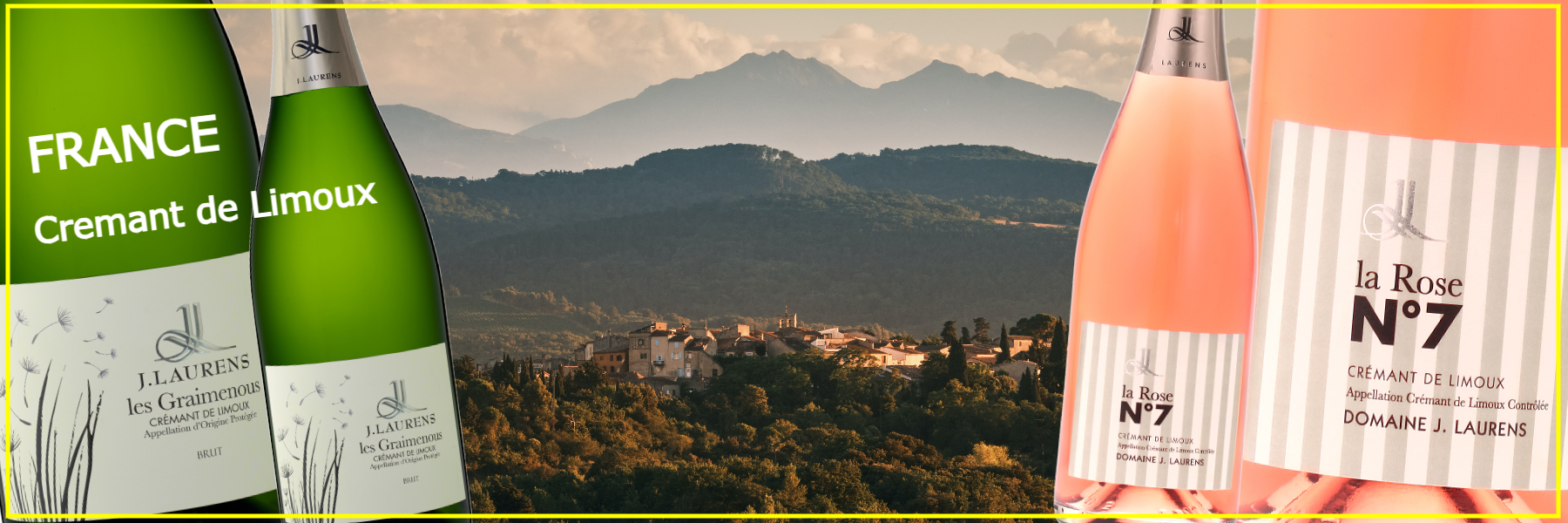
In the east of France, Jura's vineyards are in the spectacular foothills of the Alps and it's here that Domaine Desire Petit makes a delicious sparkling Chardonnay alongside traditional wines such as Savagnin Arbois, Trousseau Rouge, Vin de Paille (Dessert, straw wine) and the Voile yeast-affected Chateau Chalon Vin Jaune. I remember their Crémant having a noticeably creamy & toasty tasting palate. As good as many a Blanc de Blancs Champagne in my opinion. The vineyards have recently achieved organic certification by ECOCERT which will be applicable to wines of future vintages. Another wine to add to my extensive list of Blanc de Blancs favourites!
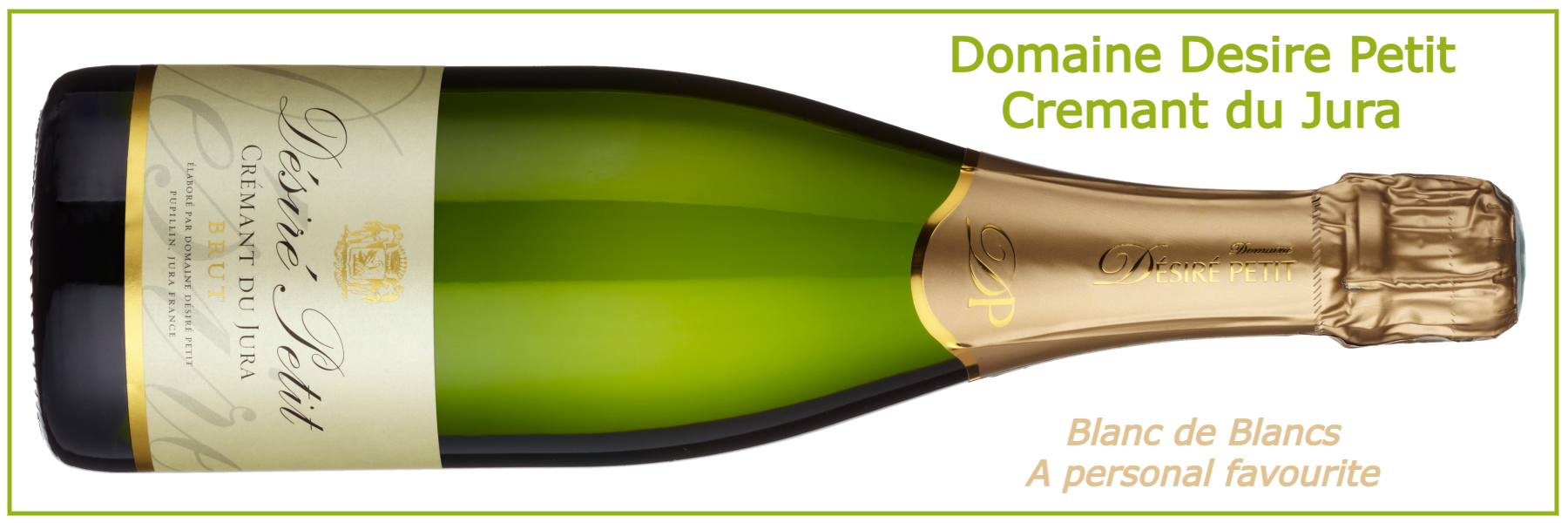
An important note for the sake of your wallet's health:
Cramant is a Grand Cru village in Champagne. If you see this on a wine's label it's going to be very expensive!!!
Don't confuse it with Cremant which, in most cases, is much more approachable and very wallet friendly.
With the seemingly never ending rise in the consumption of French, ultra-pale pink wines from Provence, such as those made by Sacha Lichine's Chateau d Esclans Whispering Angel, Chateau Minuty and Brad Pitt's Miraval rose, it surprises me that there are very few examples currently of a sparkling Provence rosé. Thank heavens: Chateau Leoube to the rescue! Purchased by the British, Bamford family in 1997, their "Love" range now includes a modestly priced pink fizz and they also have an organic, top-of-the-range Cabernet Franc based wine simply called "Sparkling de Leoube".
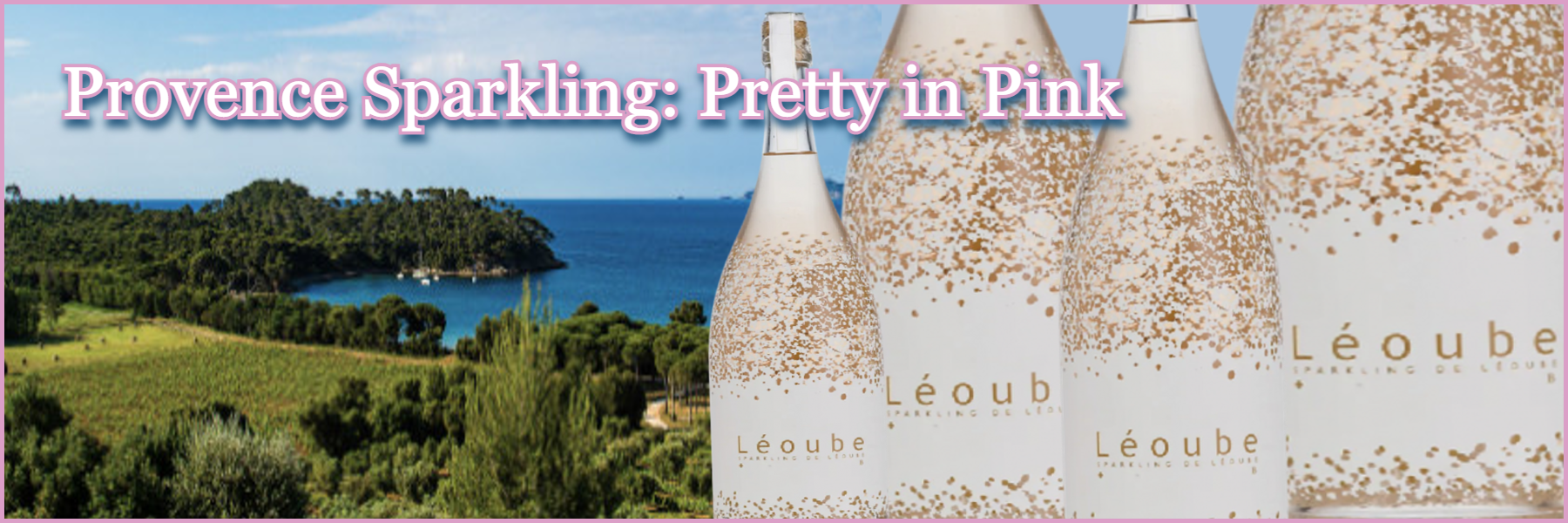
Priced, rather ambitiously I think, at over £40 a bottle, "Sparkling de Leoube" may also be found in magnums at around £80 each. Would you pay that much? Maybe you would if your "weekend cottage" is in the Cotswolds. Too rich for my budget, but I'd like a case or two of some £400/bottle Dom Perignon rosé in the boot of my (imaginary) Range Rover. I can but dream. Back to reality as I stare, transfixed at the computer screen.
Outside of France, only the Spanish Cava wine (Freixenet Cordon Negro was top of the shopping pile) had any similarity in style to Champagne. Produced in the Penedes region, close to Barcelona, Cava, in the 1980s, was generally considered an inferior, much cheaper product. Yes, it used different grapes (Macabeo, Xarel-lo and Parellada), but it was bottle fermented and was normally made in a dry, Brut style, making it a good alternative to French Champagne at an affordable price. Supermarket own label bottles were on the shelves from around £2.99 each. Yes, it was very inexpensive. If you preferred a sweeter tasting wine you'd most likely plump for an Asti Spumante (now simply called "Asti").
Half a century later, as you would hope, quality has been transformed, with many Spanish sparkling wines being produced which easily rival the reputation of big-name Champagne. Unfortunately, for the UK, they're hard to find and often expensive (£50 - £100/bottle). Five Cava "Gran Reserva" wines were awarded "Gold" in the recently announced 2023 Decanter World Wine Awards. Only one producer I recognised and, from drinking an earlier vintage, I would agree with their medal win! Look out for Pere Ventura Brut Gran Reserva 2016...
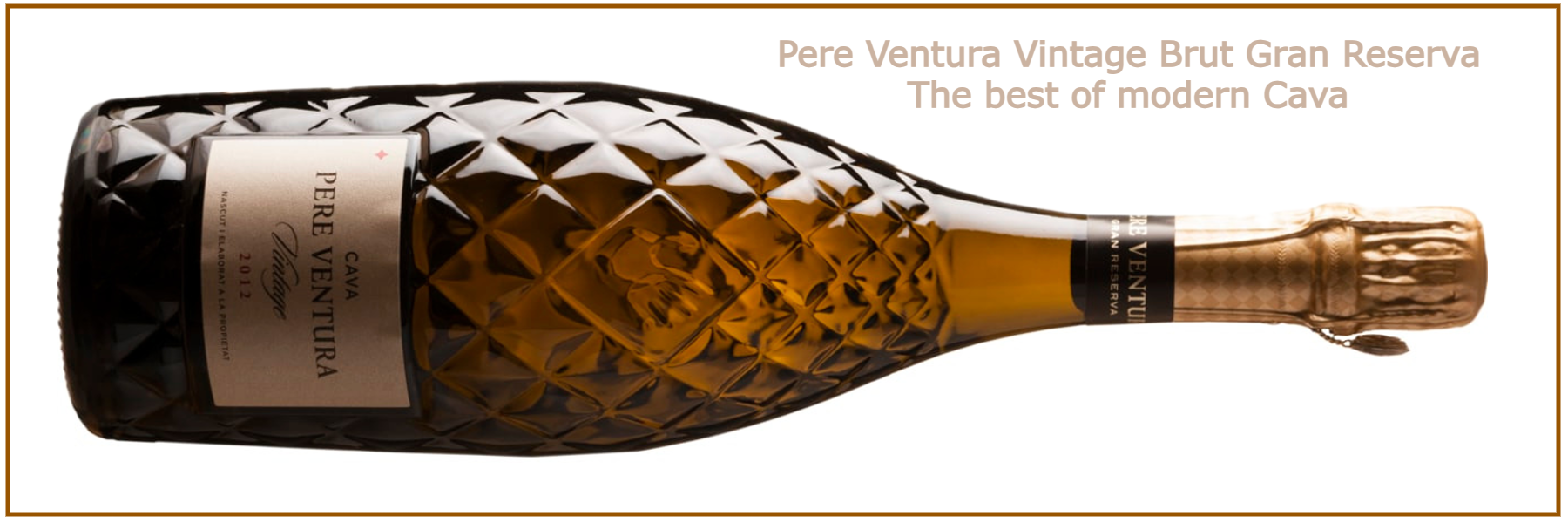
"This is a gorgeous sparkling wine with a sophisticated toasted brioche, floral and tropical fruit bouquet. The refined well-structured palate has thirst-slaking acidity, elegant fruit and a chalky freshness. Drives deep through to the long finish. Impressive!" 95/100 points.
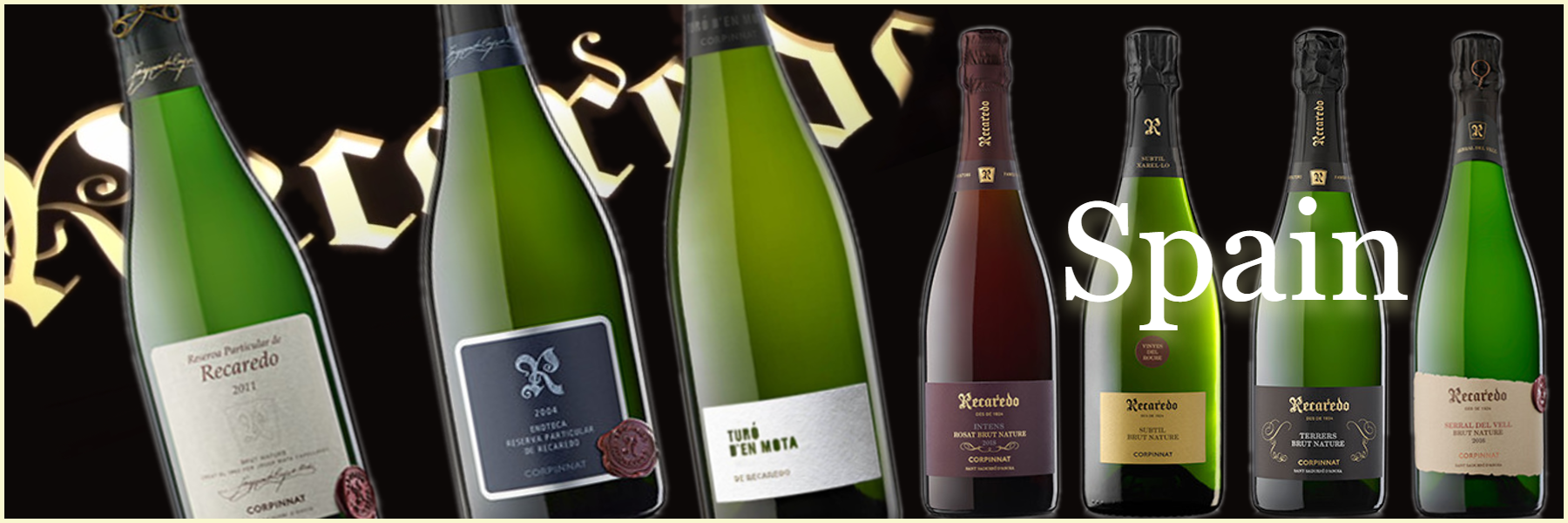
Founded in 1924, the most highly applauded producer of Catalan sparkling (now selling outside of the Cava DO) is Recaredo. A biodynamic grower who gives all their range massively extended bottle ageing. The top wines receive 10-15 years on their lees. Critically acclaimed, these are wines to showcase the titanic shift in wine quality in Penedes fizz with every wine scoring above 90/100. Most producers have a least one "dud", but not at Recaredo. The native Xarel-lo is the preferred grape in their wines and the single vineyard version, Turó d'en Mota, is one of the greatest wines in Spain. It just happens to have bubbles. The complete wine selection is produced using zero dosage additions (Brut Nature) and, as a consequence, are all bone dry, but the brilliant fruit still shines through!
Elsewhere in Europe, Sekt, from Germany, was another category which had a dedicated, hard-core of drinkers, with the likes of Henkell Trocken probably the most widely stocked brand. There are definitely better German fizz out there including the 95/100 point Georg Breuer Brut from the Rheingau region. Equal parts Pinot Blanc, Pinot Noir and Pinot Gris with an exceptionally long, 13 years of ageing on the lees. Perfectly mature on release with savoury notes of cream sauces with white meat, mushrooms and morels. Only for sale in Germany at around £40/bottle. Competitively priced against an average non-vintage Champagne. I know which one wins for me!
It was all so easy, back in the day. Limited choice and "big brand" Champagne names on everyone's list. Veuve Clicquot NV on offer at £19.99 brought the customers flooding into the store with their tongues literally hanging out and their wallets bulging with cash to snap up a bargain. Cash was still king in the 1980s/1990s and the internet was practically unused except by students illegally downloading music on Napster. Why would you use it for shopping? It'll never catch on with the public.
Moving on...
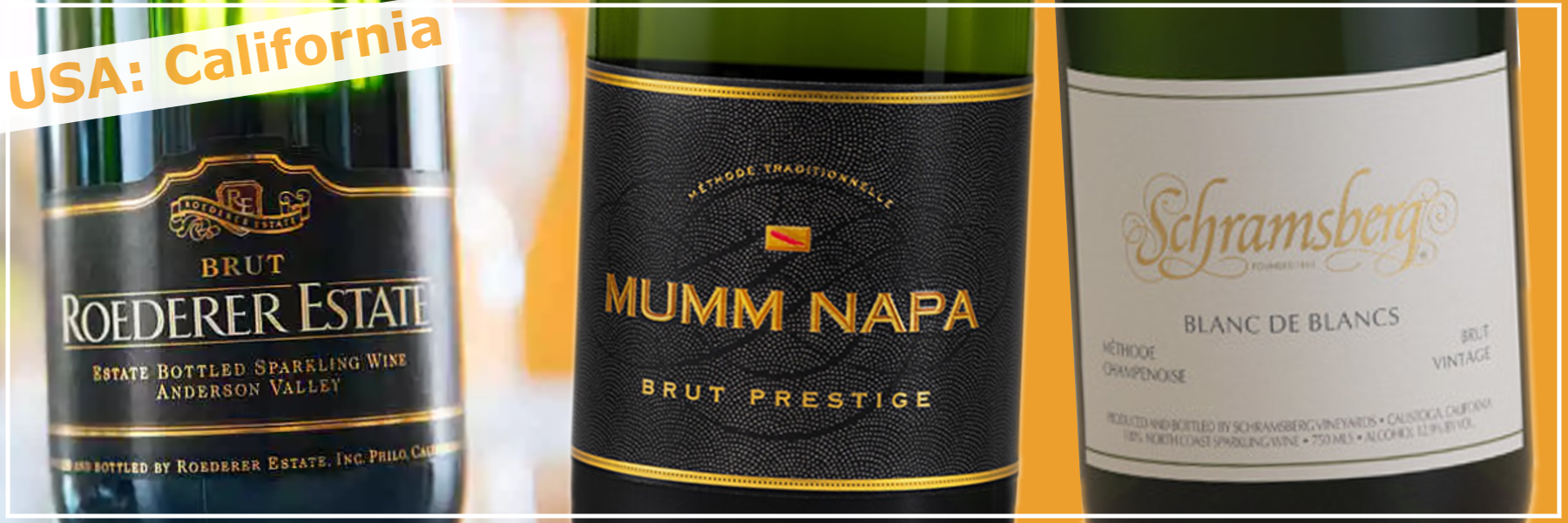
In the '90s and '00s it was all about the New World sparkling wines with California having bona fide Champagne houses making their wines mainly in the Napa and Sonoma valleys. First released in 1965, the Schramsberg Blanc de Blancs was a particular favourite of mine. Jack & Jamie Davies' winery in Calistoga was the first to produce a commercial, Chardonnay-based sparkling wine in America using a portion of barrel-fermented base wines for complexity. I tried a newer vintage on a boat trip around San Francisco Bay on the California Dreamin' trade visit. Aromas of yellow apples, toast, roasted almonds, mushrooms and honey with flinty nuances. An excellent bottle in my opinion. Perfect with all types of seafood.
The Mumm Cuvée Napa was a massive seller in the UK, promoted heavily by Oddbins who were then owned by Seagrams, the distributor of Mumm Champagne. Bright citrus, red apple, stone fruit and creamy vanilla aromas, with hints of toast, honey and gingerbread spice. Its vibrant flavours balanced by fine acidity and a rich, lingering finish. Soft, creamy mousse showcases why wine drinkers appreciated this Mumm wine so much.
Roederer Estate, founded in 1982 in Mendocino County’s fog-shrouded, Anderson Valley, is another California fizz maker of great repute. Using only fruit from their own vineyards, the multi-vintage "Estate" blend comprises 60% Chardonnay and 40% Pinot Noir. A lovely sparkler, rich and refined yet overflowing with fresh fruit and lively acidity. Features red apple and raspberry flavours laced with toasty brioche and fresh ginger. Long, luscious finish. In the UK you'll find Roederer's main US wine sold as "Quartet".
On the domestic American market much of the wine was sweet, with sparkling examples of White Zin, or various, fruit-flavoured Moscato. Poor quality and so full of sugar. Tacky, tacky, tacky, is my personal view of these products. Still rosé wines labelled as White Zinfandel resolutely remain loved by millions of wine drinkers the world over, including in the UK. Just take a trip to Essex to find devotees of the style!
Australia and New Zealand "traditional method" wines were also very popular with the Aussie Jacob's Creek Chardonnay/Pinot Noir Brut and Lindauer, from NZ, both selling for well under £10/bottle. JC is still available, but Lindauer is restricted to New Zealand stores. Another Australian speciality is their sparkling red Shiraz produced by the likes of Seppelt and Rockford in the Barossa. Seppelt's Show Sparkling Shiraz is a stunner! Only made in the best vintages and aged on lees for a minimum of seven years prior to disgorgement, this is fantastic fizz with rich, bright fruit, displaying blackberry, dark cherry and raspberry compote. Some complex crushed leaves and chocolate flavours reveal sweet spices, and fine, mature tannins provide a distinction and balance. Now it'll cost you around £50 a bottle in Australia. When Wine Rack listed it, I think it was under £15. Memories of a truly great wine at a stupidly low price. I miss being able to buy it here.
Clare Valley Pauletts Trillians sparkling red Shiraz/Cabernet is one to try from Frazier's list.
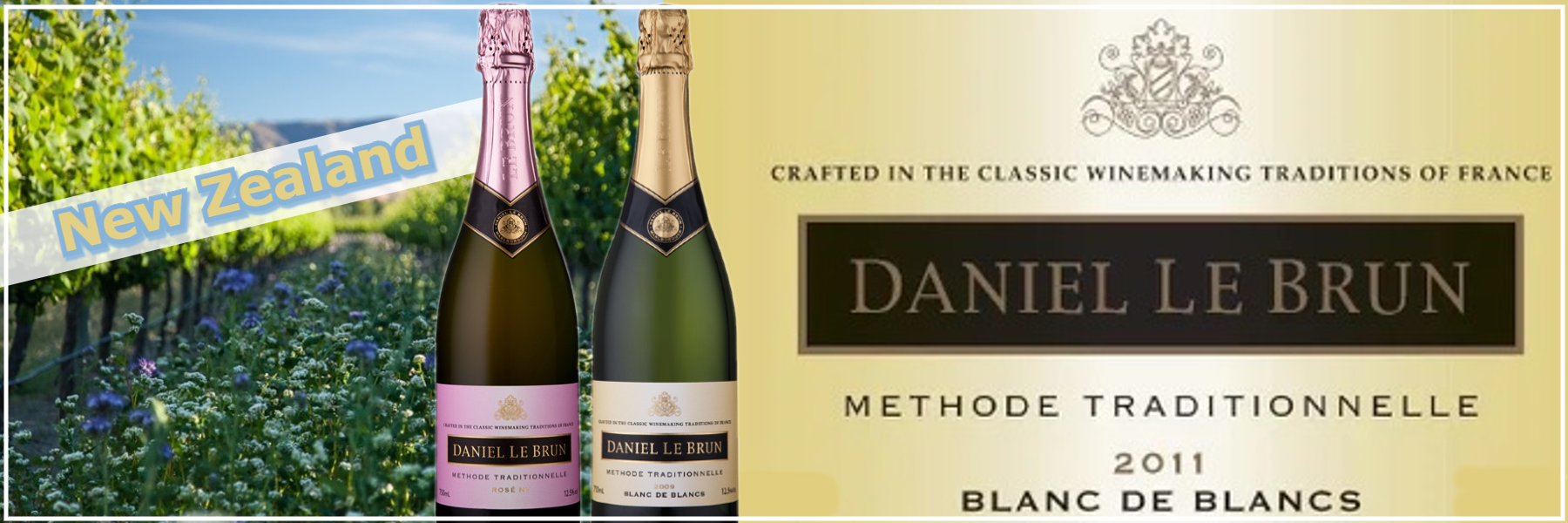
When I went to New Zealand, back in 1999, Cloudy Bay Pelorus was a tiny production, hand-crafted Marlborough wine. They even hand-riddled the bottles in "pupitre" racks. There used to be a more complex vintage version available which was all delicious toast and nuts. Well worth the extra cost. My favourite Kiwi fizz, but now difficult to find outside of New Zealand, are the wines of Daniel Le Brun. Another Champagne house making fantastic wines since 1985 which are so close in style to their home production that I defy you to tell the difference. The Blanc de Blancs and their rosé are highly recommended by New Zealand critic, Bob Campbell MW. I'm not the only person who likes this producer. They also sold a really good, black sweatshirt in their winery shop with "Daniel Le Brun" highlighted in gold on the front. I bought one and spent the next few years being called "Daniel" by customers. So droll. I didn't find it amusing for very long.
Currently, Tasmania is now the "go to" location for fine Australian fizz and the Jansz range fulfils the "Traditional Method" style, quality and great value pricing when compared to Champagne, itself. The Jansz Premium Cuvée Rosé fizz is vibrant, showcasing the beguiling aromatics inherent to Tasmanian sparkling Pinot Noir. There are delicious, captivating aromas of strawberries and cream, rose petals, Turkish delight and fresh brioche. The palate is creamy, textured and rich while retaining an elegant vibrancy and freshness. Under £20/bottle, the white, Premium Cuvée is also a steal.
Piper's Brook Vineyard was one of the earliest producers of Tasmanian bubbly and, when I went there in 2000, it was one of the few wines which actually tasted like they were aiming for serious quality. I think the tasting was done outside in the very exposed and windy carpark. The still wines from Tasmania were nearly all made as "hobby wines" and to be blunt, were quite terrible! Nowadays, just 30 years' later, Tasmania has found its own, unique style of winemaking and the number of top-quality bottles has soared.
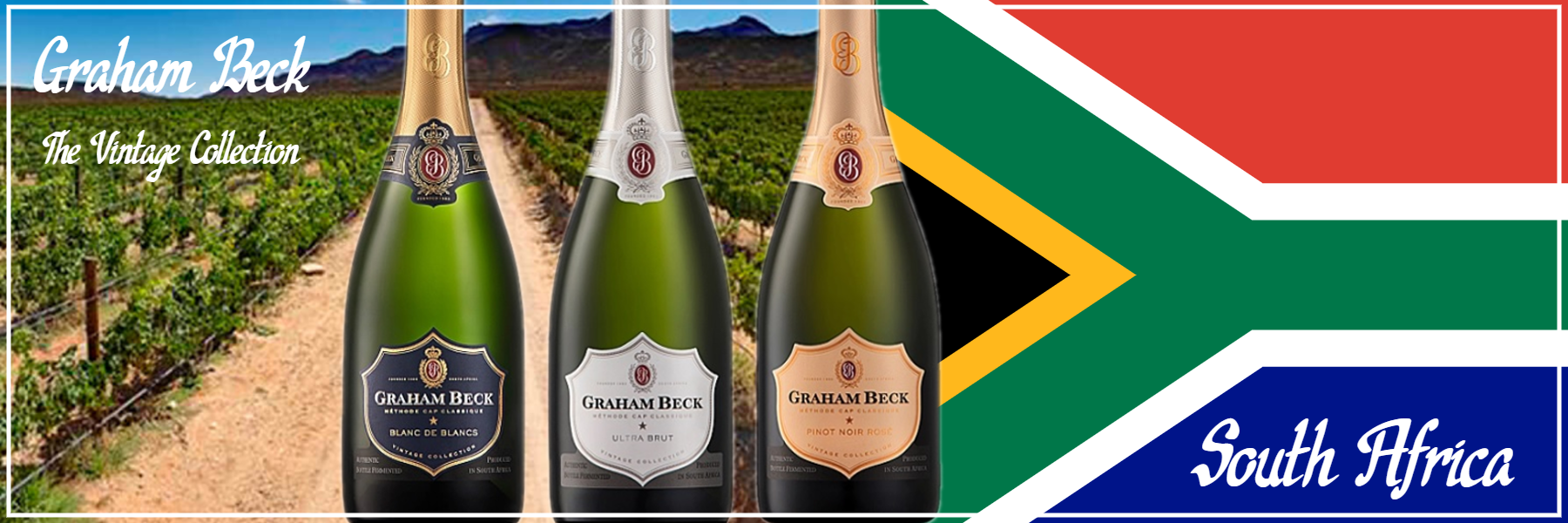
Another country benefitting from the interest in "New World" bubbly is South Africa. Early examples were often quite harsh on the palate and tended to be young wines fermented in tank. The worst ones were just cheap wines pumped full of CO2 gas. For my sins, I had one of these "pump bicyclette" wines with a group of tourists on a sailing boat tour from Cape Town. The crew, a bunch of "pirates", were hanging off the rigging, cranking the boat over to such a degree that the sea was almost coming over the bulwarks. The passenger seating ran along both sides of the deck and, as no life jackets were supplied, it was a bit worrying as Cape Town fast disappeared from view! The best wineries used the "Cap Classique" method (SA's name for the traditional method) and my favourite producer by some margin is Graham Beck. Founded in 1983 in the wilds of Robertson, it's now run by winemaker Pieter "Bubbles" Ferreira. Discarding their production of table wines, Graham Beck is now a 100% sparkling wine affair. The quality is simply superb across the extensive range with the vintage Blanc de Blancs, vintage Pinot Noir Rosé and vintage Ultra Brut (zero dosage) bottles all critically acclaimed and multi medal winners. They also make a selection of non-vintage wines including a Demi-Sec called "Bliss Nectar". Top of the range is "Cuvée Clive", another, much pricier, Blanc de Blancs. Personally, I prefer the quality/price ratio of the vintage wines. All three of these vintage collection wines are in the UK for around £25/bottle.
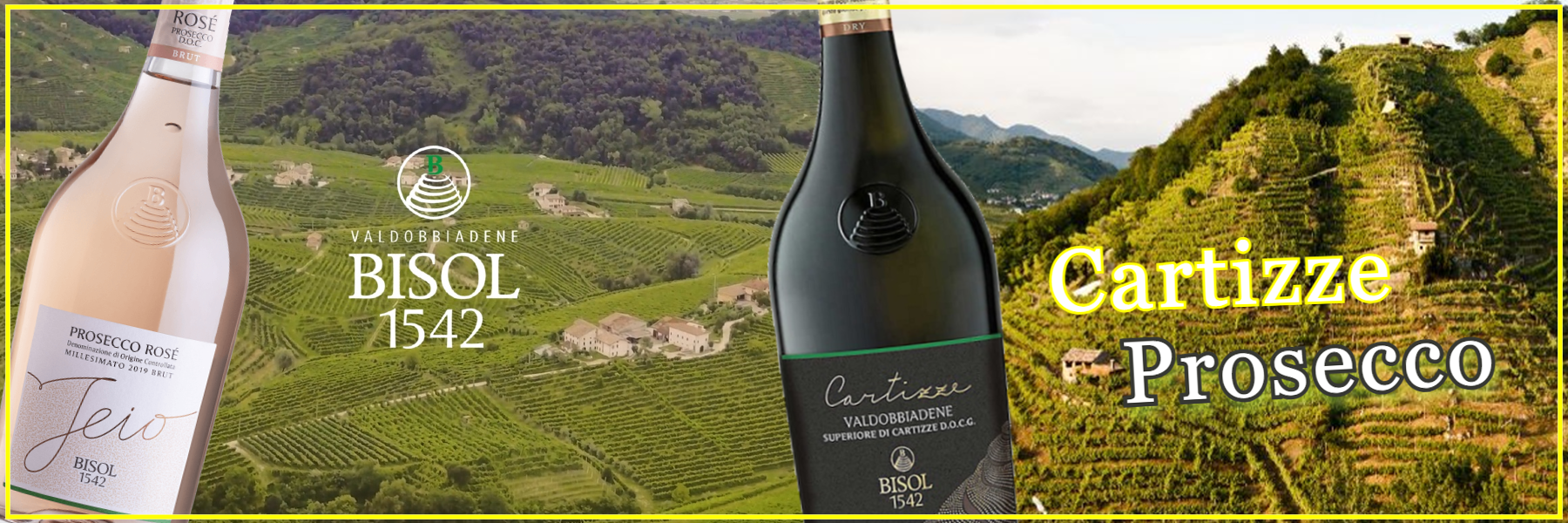
The next phase in sparkling wine favourites with the great, British, drinking public has to include Prosecco from around Veneto in north-eastern Italy and various regional wines using "Metodo Classico". Prosecco D.O.C. is a tank fermented wine and for the best quality it depends on the vineyard location. The important names to look out for include Conegliano-Valdobbiadene D.O.C.G. (or simply Valdobbiadene), Asolo D.O.C.G, Superiore di Cartizze (Grand Cru vineyards within Valdobbiadene) and Rive (individually named Premier Cru vineyards). For my money, Bisol Desiderio & Figli is the best producer. Their top-of-the-range Cartizze is brilliant, but it's not the cheapest kid on the block. Rose and white wisteria notes blend with the aroma of apples, pears and peaches, touching on the aromatic nuances of thyme, exotic fruit and pastry. The best fruit is obtained from the very hilly DOCG areas with the everyday bottles coming from lesser vineyards on flatter ground where machine harvesting can be utilised. Bisol have been growing the Glera grape in Valdobbiadene since 1542. That's a lot of winemaking experience. Recently, the name "Prosecco" has been allowed on bottles of sparkling rosé made in the region. Bisol's Jeio Prosecco Rosé Brut is a new release from the company with floral notes, a sweetness of rose and lily of the valley, with a fresh citrus fragrance. The blend is 85% Glera and 15% Pinot Nero.
If Prosecco Rose pink fizz is a must, try the brilliantly named Brilla Prosecco, with its delicate and complex bouquet of fruity notes that recall peach, green apple and lemon. There's also a floral note of acacia and rose. Fresh and light on the palate and under £15 a bottle at Frazier's, today.
An important note: " Prosecco Extra Dry" on a label actually denotes a medium-dry wine. If you want dry, look for "Brut" or "Extra Brut". The many sweeter tasting wines on the market brought in a huge number of drinkers who would never have considered having a sparkling wine as they always tasted "too dry". Weirdly, they had no problem with the label stating it was "Extra Dry".
Frazier's list a superb Prosecco Valdobbiadene from Ca Vittoria and it's well worth getting a bottle or two for a weekend in the sun. It might be in Solihull, but I'd rather taste it in Venice. With my penchant for tasting sparkling wines on boats, I'd have to open a bottle on a gondola! Try some in an Aperol spritzer. It's really easy to make. Take a glass full of ice cubes, add Prosecco and soda water to your Aperol, then top with a slice of orange. Play around with the proportions of the ingredients to find your perfect mix. There's no single blend to which you have to adhere. So, have fun trying them all.
Own a Ferrari (or any other fast, Italian car)? You need some Ferrari Trento fizz to sip while you polish your pride and joy on the driveway. Unlike Prosecco, this wine is bottle fermented and 100% Chardonnay, offering citrus, white peach and pastries on the palate. Crisp, dry and ideally served with a tangy, Italian cheese risotto.
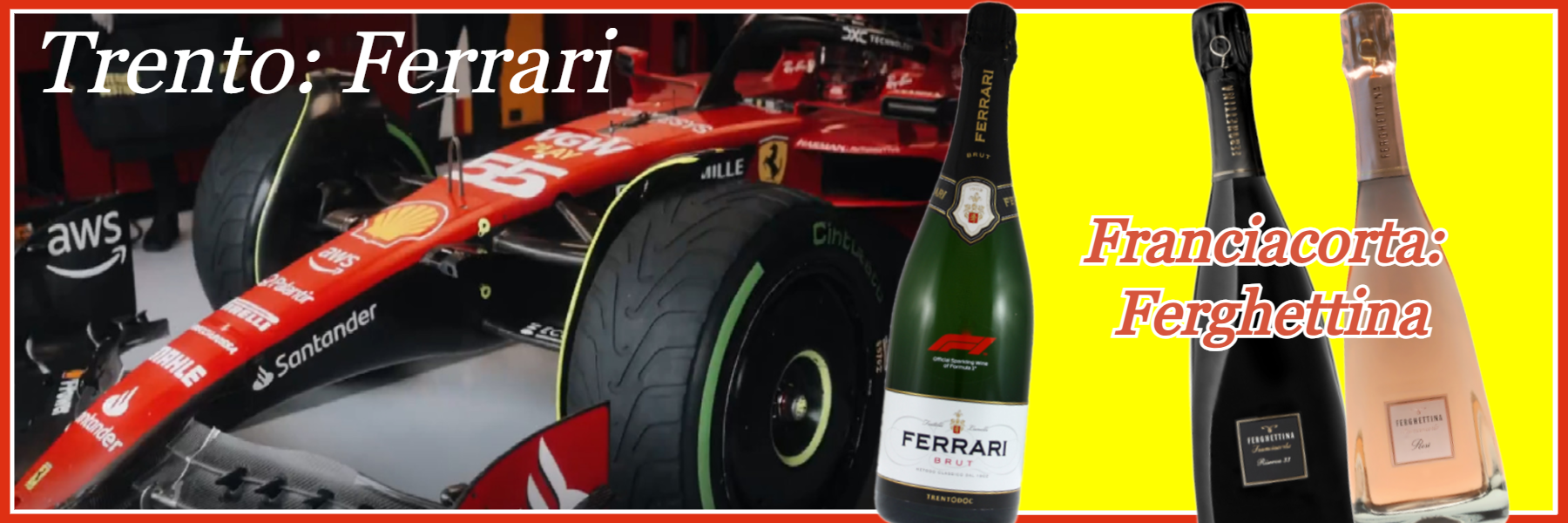
Heading west to Lombardy, approximately half way between the eye-catching (and touristy) Lake Como and Lake Garda, in the hills around the town of Brescia, you'll find a wine that's been secretly climbing the popularity charts. It's called Franciacorta. Metodo Classico production and comprising of Pinot Noir and Chardonnay in varying proportions, it really is the Italian version of Champagne. Franciacorta is widely regarded as Italy's finest sparkling wine. Volume, however, is small. In fact, Champagne makes 100 times more wine. Prices can be high, even in Italy. It'll never eclipse Prosecco in popularity, but it's trying its best. I've only ever tried the wine range from Ferghettina with their "Pas Dose Riserva 33" being my favourite. Using a blend of one third each of the (still) base wines from their Saten, Milledì and Extra Brut wines, as a Riserva, it gets 8 years of lees ageing (minimum requirement is 5) and has no dosage to adjust sweetness. Technically, it's completely dry, but the wine is one I would describe as "floating" in the mouth. Typically, no longer sold in the UK, it is exquisitely balanced and refined with lemon/citrus fruit, toasty notes and a mouth-watering, saline acidity. Cost to you? About £50 in Italy. Their mid-priced range is still in the UK and both the white and rosé come in square-based bottles resembling a pyramid shape. Very tasteful and different look. Congratulations to the design team. The wine is as good as the bottle!
If, as a travelling oenophile, you work your way down the Italian "boot", you're likely to come across all sorts of sparkling wines which rarely, or never, see the export market. Fizzy versions of Gavi, Lugana and Verdicchio, strange sweet red fizz from Brachetto d'Aqui, or even real, dry, fully sparkling Lambrusco Rosso. The organic estate of Medici Ermete in Emilia-Romagna make a very wide range of wine including a "Traditional Method" Lambrusco called "Gran Concerto" produced using the Lambrusco Salamino grape varieity. Being the home of such gastronomic essentials as Parma ham, Parmigiano Reggiano cheese, aged Balsamic vinegar and lasagne, how can you do without a decent bottle of Lambrusco in your wine rack?
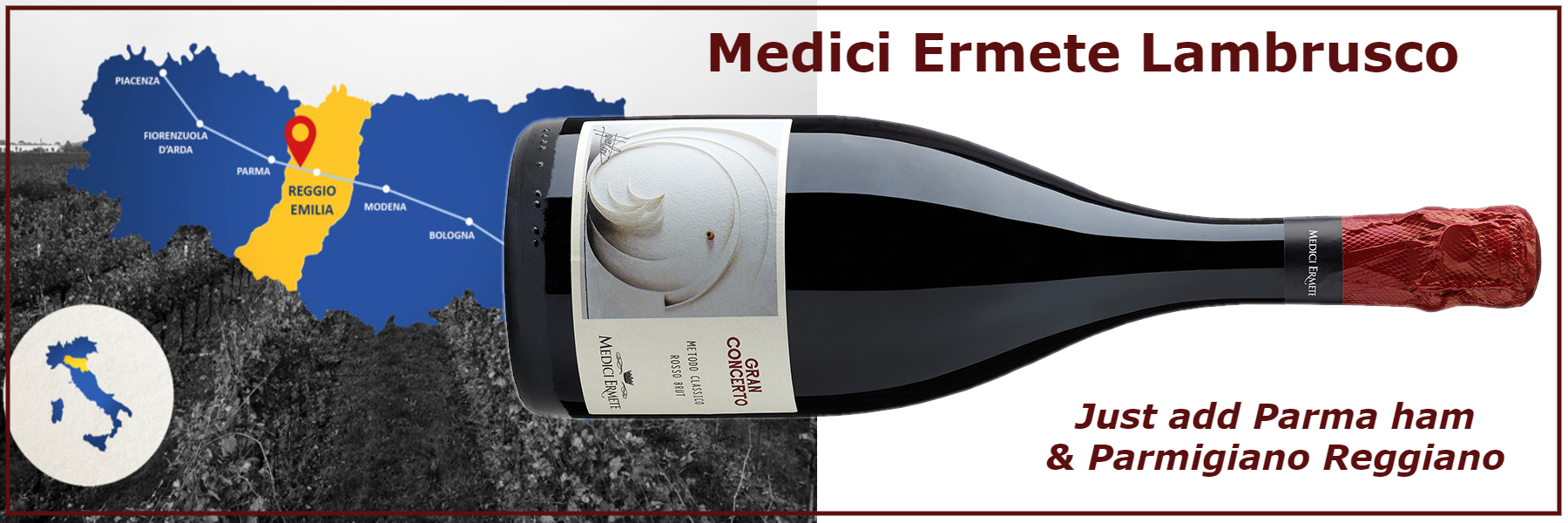
"Gran Concerto" has ripe blackberries and tart raspberries on the nose along with herbal and wildflower notes. Lush and plush on the palate with dark, savoury, earthy fruit. Now that's how Lambrusco should taste.
Many, many years ago, in a genuine Italian run restaurant, I once had the old-style, cheap, sweet red frizzante version of the wine with Christmas roast turkey. It was the only wine they had left on their list and it was a food and wine match made in hell. Don't leave the restaurant booking too late and always go for quality every time. Lesson learned!!!
Moving up to date, English sparkling wine is now incredibly popular as a direct Champagne replacement. Same grapes, same production method, but very often better value for money. Frazier's can definitely recommend them. Our long-term listing has been Nyetimber from West Sussex. Their "Classic Cuvée" is a staple with our customers and we ship it all over the country. Weddings, parties, functions, you name it... Nyetimber has got to be the number one choice. Truly world class, this wine was originally made by winemaker Dermot Sugrue using grapes from a single vintage and, in the early 90s, was so far ahead of any other wine made in the UK it was almost a joke! I remember trying both the original vintage release along with their Blanc de Blancs. Of course, you guessed it, I loved the Blanc de Blancs. Fast forward 30 years and, along with vineyard expansion, new owner (Eric Heerema) and a new winemaker (Cherie Spriggs), the wines have amazingly gone from strength to strength. With numerous golds and trophies in competitions all over the world, Nyetimber has set the standard for others to follow in the UK.
"Experience a beautifully balanced taste with a pale gold colour and a fine, delicate mousse. On the nose, discover aromas of honey, citrus, and brioche, leading to a palate filled with ripe apricot, honeydew melon, and baked apple flavours. The wine finishes with a refreshing crispness and a creamy texture that lingers long after each sip."
With so many pretenders to the crown, English sparkling wines have moved on dramatically with producers such as Gusbourne, Wiston Estate, Hattingley Valley, Hambledon, Denbies, Chapel Down, Camel Valley and Hush Heath Estate (Balfour), all making excellent wines. There are many more to try. If you want something different, why not head to Wales and sample the biodynamic Blanc de Noirs (100% Pinot Noir) from Ancre Hill Estates in Monmouthshire?
Did you know that the French are now buying up potential vineyard land across the south of England for making a "Vin d' Angleterre" fizz? Mon dieu! Whatever next?
And finally, we reach Champagne. So much has been both said and written about Champagne over the years and I'm not going to regurgitate it all here. The Champenois are fantastic at communicating their luxury brand image, where marketing is king and value for money is, well, you decide. Briefly, I've always thought there are three different types of Champagne drinkers. Firstly, the budget, discounter, supermarket-label fizz aficionado who is only looking for the lowest price bottle with the word "Champagne" on the label. This can include well known brands, but it doesn't really matter. It's all about perceived value. Secondly, the customer who needs a safe, quality, brand-name on their bottles to show at dinner parties. These could include, for example, Moet et Chandon Imperial, Veuve Clicquot Brut, Bollinger Special Cuvee, Pol Roger Brut Reserve, Laurent Perrier Brut and Tattinger Brut Reserve Champagne. The premium cuvées from these producers, such as Dom Perignon Vintage, Krug Grande Cuvee and Cristal are brand names in themselves with, these days, restricted availability and very high prices! The third category of Champagne imbiber is the adventurous traveller who willingly drives miles up and down winding French country lanes looking for local wineries which, rarely, or never sell on any export market. It becomes "their" personal Champagne, is usually at the very least made from "Premier Cru" rated vineyards and, if possible, from an exclusive "Grand Cru" grower who, for some bizarre reason is unheard of and still sells his wine for under £20 a bottle to the local village bistro. A very rare occurrence in these challenging times of spiralling prices. More likely, you'll pay upwards of £50 to obtain these wines, but in the UK, they would sell for £75+ and, if they do make it to the UK shelves, even in highly reputed, independent wine merchants, the same customer would often snub such bottles purely because someone else had the good sense to ship some. Madness!
Frazier's just happen to list the wines of Henriet Bazin which nicely fit the bill. Grapes from only Premier & Grand Cru sites and very sensible prices. Four generations of artisan wine-growers based in the village of Villers Marmery in the Montagne de Reims. Give them a go. It'll save you the hassle of the M25 and a ferry to France. A strike? Not again!


